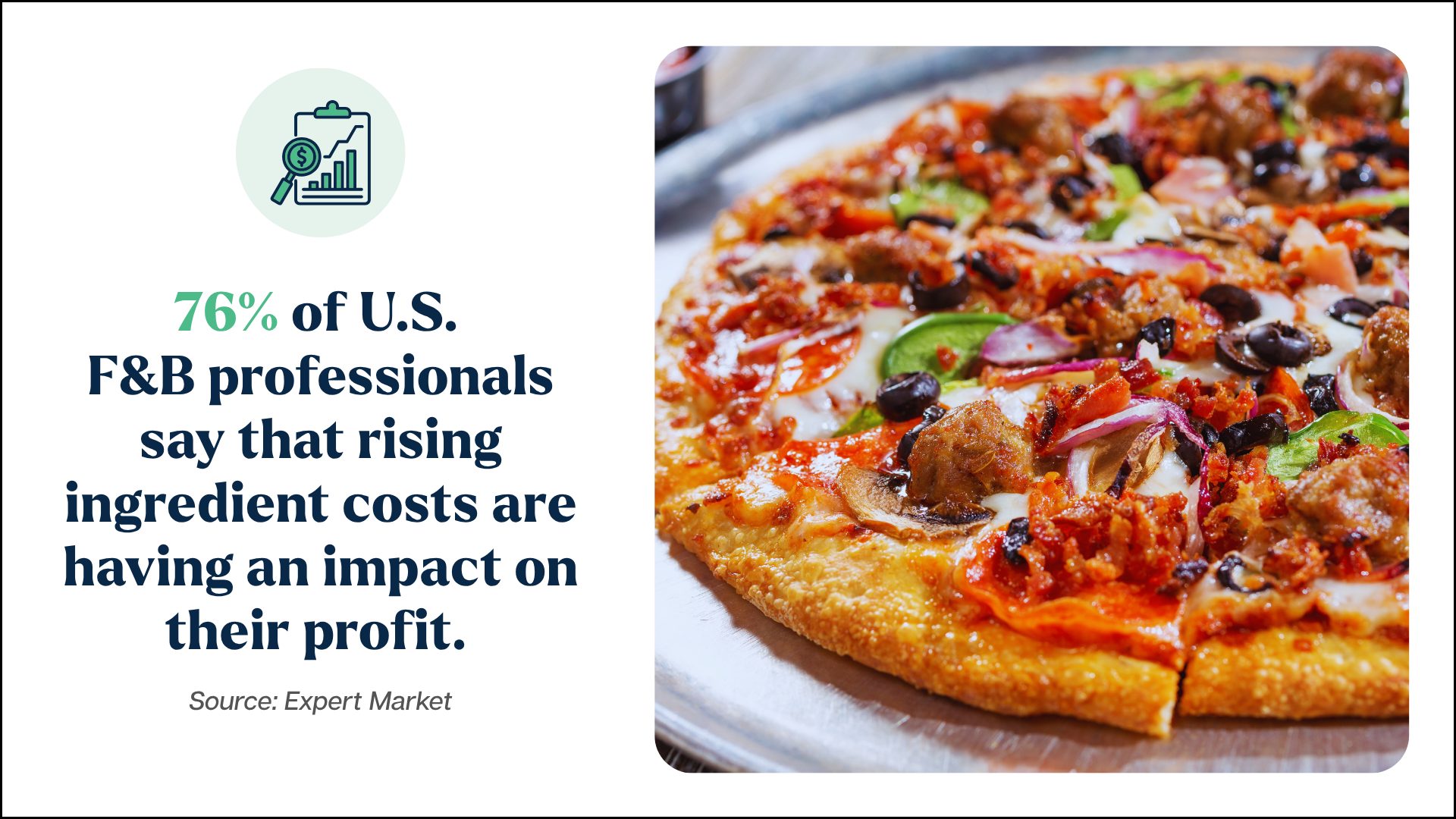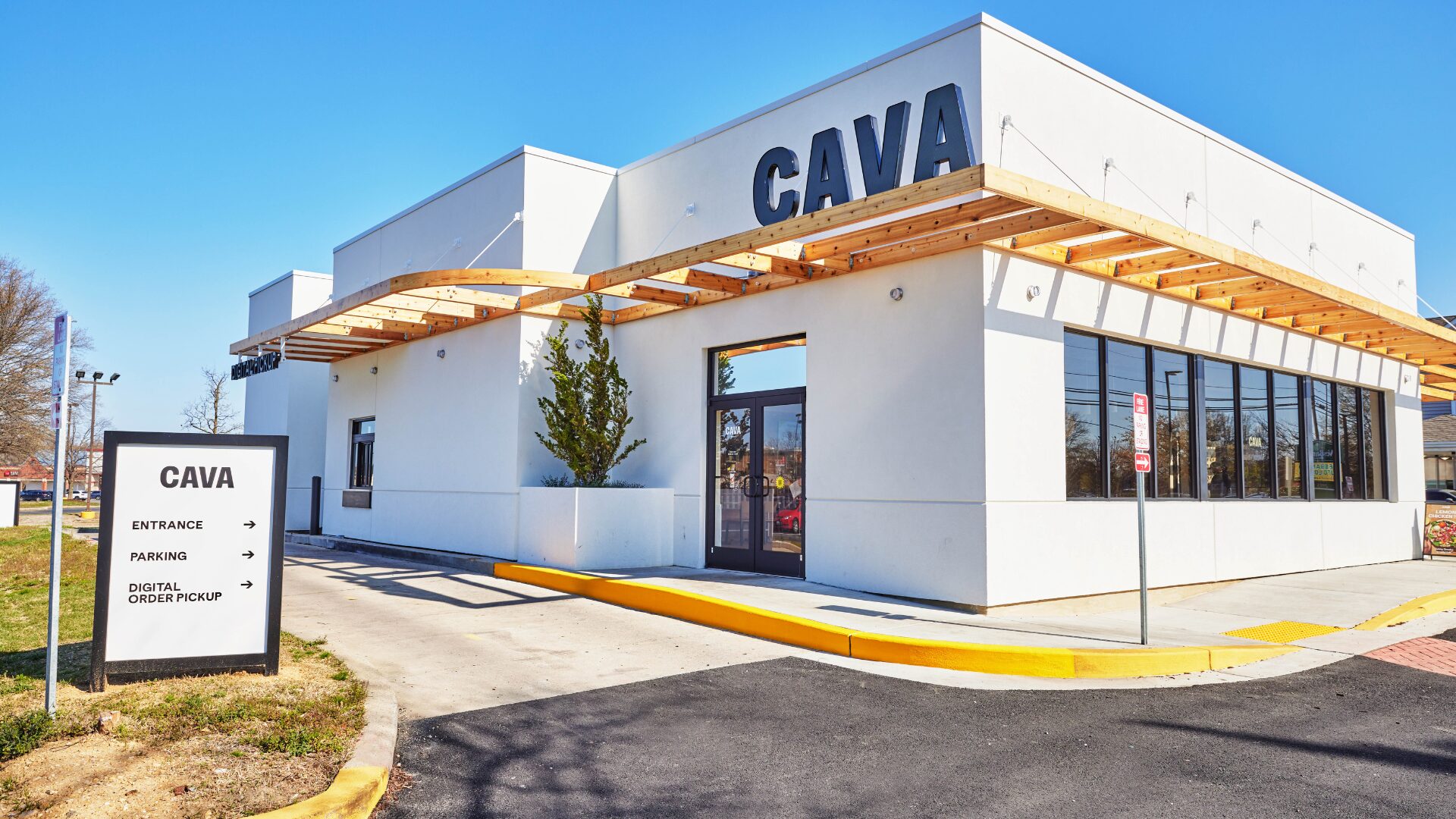Rising cost of ingredients. Increasing wages. Tariffs. You name it and the food industry is facing it right now. Both internal costs and external forces are applying pressure to the food industry.
Expert Market’s 2025 Food and Beverage Report found that the majority of restaurant operators are feeling serious stress.
“The restaurant industry has always worked on tight profit margins, so, when there’s a rise in operating costs, businesses have no choice but to pass that on to the customer. It’s not a great situation to be in – they’re backed into a corner at the moment,” said Chris Maillard of Expert Market.
“The food and beverage sector is often the canary in the coalmine – as discretionary spending, it’s one of the first areas to feel the pinch in tough economic climates. This could be a signal that tariffs will soon start to bite across other areas of the U.S. economy.”
Costs Accumulate
According to Sawsan Abublan, CEO of Shawarma Press, the most challenging factor for restaurants right now is the rising cost of items like food supplies.
“Unlike labor or utilities, which can be forecasted, ingredient prices fluctuate frequently and are influenced by multiple external factors – global trade conditions, transportation costs, climate impacts, and even international conflicts that affect supply chains, all of which make margin management increasingly difficult,” Abublan told The Food Institute.
Expert Market found 76% said that rising ingredient costs are having an impact on their profit.
Wages
Sixty-two percent of respondents to the aforementioned report said they’ve had to raise menu prices to offset wage increases.
Labor costs might be the most predictable expense, but increases in other areas, like ingredients, have made it harder to plan for, noted Chris Motola, financial analyst at National Business Capital.
Tariffs
According to the report, 47% of businesses said tariffs have directly led to increased menu prices for customers.
Tariffs have been attributed to an increase in ingredients and supplies, according to 41% of respondents, and 25% say supply chain volatility is a major obstacle.
Re-engineering menus around more profitable prime costs is a skill some restaurants use to mitigate the aforementioned challenges, while some chains “struggle, and just wallow in the headwinds,” said Dan Rowe, the CEO of Fransmart.
Industry Impact
When the dust settles from all these factors, independent restaurants may be hurt most.
“Large chains of quick-service restaurants may be able to absorb price increases because they buy in such massive quantities from a variety of locations,” said Izzy Kharasch, president at Hospitality Works. “A small restaurant will be far less able to absorb those costs without raising menu prices.”
These obstacles figure to linger well into 2026.
“I’ll be interested in seeing how the rest of 2025 plays out – whether, for example, we see fewer new restaurants opening and more closing their doors. It’s sure to be a real roller-coaster ride for the entire industry,” Kharasch said.
One certainty: restaurants will need to learn to adapt.
“The industry has always evolved through challenges – whether it’s economic shifts, labor shortages, or changes in consumer behavior,” Abublan said. “While some volatility will persist, especially with global supply chains, I believe these pressures are driving restaurants to become more resilient and efficient.”
Despite challenges like rising ingredient costs and tariffs, the restaurant sector isn’t completely devoid of success stories right now.
“Everything goes in cycles, and there is always opportunity in foodservice,” Rowe, of Fransmart, noted. “Look at Five Guys, with a limited menu and relatively high menu prices – same-store sales continue growing and they’re opening new units all over the world.
“I went to a smash-burger concept (recently) that does $4 million a year in 1,000 square feet and makes 30 percent profit. Imagine making $100,000 a month profit in a burger concept, while everyone else is crying about beef costs? … (There’s) plenty of opportunity.”












